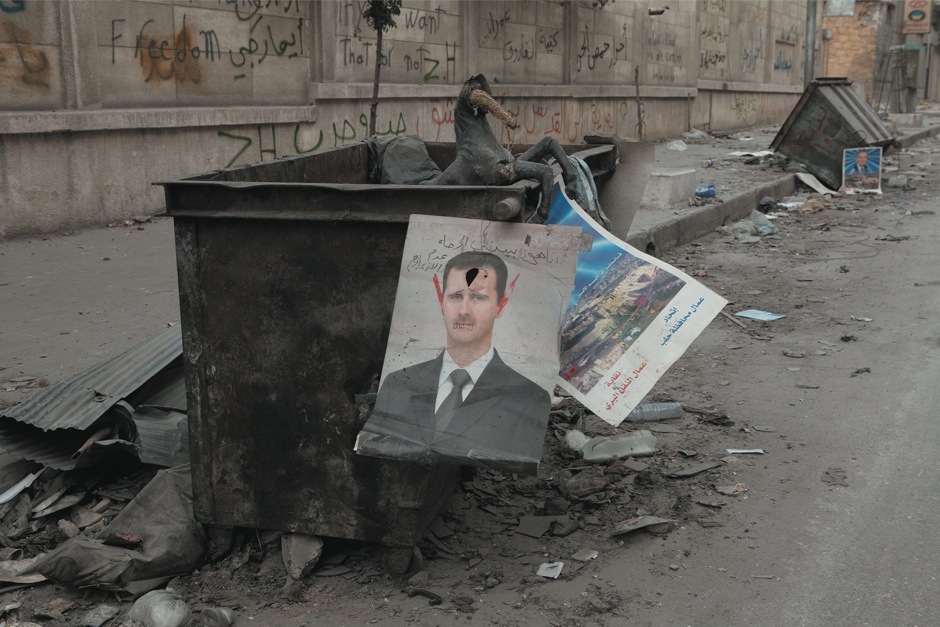The glaring weakness in President Obama’s new Middle East strategy, unveiled on September 24 at the United Nations, is the lack of troops on the ground in Syria. In Iraq, the Kurdish peshmerga, a reformed and remotivated Iraqi army, and the Sunni tribes that played a major part in the success of President Bush’s surge can all be brought into the fight against ISIS. But in Syria—whose disintegration directly threatens the five nations on its borders and indirectly the entire region—there is no one. The Pentagon has made its timetable starkly clear: it has announced that it will take three to five months to identify and vet fighters from the Syrian opposition and another year to train them. What will happen, other than air strikes, in the interim?
No matter how seemingly intractable a problem, reexamining deeply buried core assumptions can sometimes point the way to a solution. The drastic shift in priorities for every country in the Middle East occasioned by the frighteningly rapid rise of ISIS over the past several months may have made it possible to do just that in Syria. Two assumptions that have steered policy from the beginning of the crisis—that the eventual outcome must hinge on whether Bashar al-Assad stays in power or goes, and that the framework of a political agreement must precede any cease-fire—ought now to be rethought.
Notwithstanding the appalling human cost of this war—now standing at 200,000 dead, three million refugees, and six million forced out of their homes—President Obama has clung (and may well have been wise to do so) to what he sees as the lesson of prior American military interventions abroad. He has insisted from the outset that the US not take the relatively easy step of deploying its immense power until there is at least the outline of a political agreement among the warring factions. He couldn’t find one, and neither could anyone else.
In August 2012, not long after former UN Secretary-General Kofi Annan stepped down as the international community’s special envoy on Syria, he and I shared a coffee break between airplane flights. Speaking with deep sadness, this consummate international negotiator said he’d never worked harder on a problem with less to show for it. Since then, the widely respected former Algerian foreign minister and international civil servant Lakhdar Brahimi has done the same, with the same result.
What Annan and Brahimi tried to do through a series of meetings in Geneva was to weave together enough threads of political agreement to form the basis for a cease-fire. The problem was that when one side had brought off recent military success, it felt optimistic enough to believe it could fight to victory and was uninterested in making political concessions. Even had the fighters themselves come close to equal levels of exhaustion and suffering, half a dozen powers that were fueling the war by proxy could and did ensure that a stable military equilibrium was never reached. Those powers included Russia, Iran, and Hezbollah, which were backing Assad, and Saudi Arabia, various Gulf States, and the US, which were backing the opposition. Despite enormous efforts, the Geneva talks failed.
What’s different now is that the two most important players, Sunni Saudi Arabia and Shiite Iran, share an urgent interest in defeating ISIS before the chaos it is sowing reaches their own borders. According to a leading expert on the Syrian conflict, this might make it possible for the Assad regime and the non-jihadi opposition to take a highly unusual step. Yezid Sayigh—my colleague at the Carnegie Middle East Center in Beirut—argues that the time is ripe for both the Assad regime and the non-jihadi opposition groups to execute comprehensive (that is, not local), unilateral truces, undertaken separately but in parallel.*
For this to take place, no formal agreement would be necessary or indeed possible. No agreement-blocking preconditions would be considered, just two clean cease-fires. Sayigh’s insight is that both sides currently share a balance of weakness. Both need a respite from fighting each other to enable them to concentrate their forces on preventing ISIS from winning what could be game-changing military victories.
The Assad regime has suffered heavy casualties at ISIS’s hands this summer and been forced to steeply raise the prices of food, water, and electricity for people who are already suffering from drastic shortages. For their part, the opposition forces centered on the Free Syrian Army are close to losing control of their last border crossing to Turkey through which come arms, trained fighters, and desperately needed humanitarian assistance. Both sides—Assad’s forces and the moderate opposition—writes Sayigh, “are stretched thin, bleeding badly, and in an increasingly vulnerable position.”
Advertisement
Nonetheless, it is unlikely that President Assad would agree to such a step without a substantial push from Iran, his most important backer. Tehran served Washington’s ends when it forced former Iraqi Prime Minister Nouri al-Maliki from office but it won’t nudge Assad into a cease-fire without some kind of understanding with Saudi Arabia and—now that the US is directly engaged—with Washington. Such a trilateral understanding is obviously a tall order for powers whose domestic politics make it difficult or impossible for them to be seen to be cooperating.
The need for secrecy is not an insurmountable hurdle, however; progress in diplomacy often demands it. The key point is that at least the immediate interests of all three are convergent. The longer term is another matter. Neither Saudi Arabia nor Iran would push for a cease-fire if it believed that the other side—Shia or Sunni—would dominate Syria after the threat from ISIS was countered. And so, one is back to the need for some kind of political agreement. Here a second core assumption might be jettisoned.
Until now, the controversy over Bashar al-Assad’s fate has blocked any possible compromise: some absolutely insist that he stay, others that he step down. The impasse could be sidestepped if Assad were allowed to stay in office, nominally president, but with most of his power dispersed to regional governors, the prime minister, the parliament, and the military. Though he is a war criminal, Assad’s personal fate matters less at this point than his country’s. A government of national unity could be formed embodying such an arrangement, to be bolstered by some form of international peacekeeping.
There are any number of reasons why such an approach might fail. Assad might prove obdurate. The opposition might be unable to reach agreement to proceed among its many factions. Saudi Arabia or Iran or both might prove unwilling. Non-ISIS jihadi groups, notably the al-Nusra Front, may refuse to take part. If negotiations over a nuclear agreement between the US and Iran fail, the Rouhani government could be so discredited at home that it is politically unable to take any risk for peace abroad. And so on. The odds are against success.
That’s one valid way to look at this, but there is another. Nearly half of Syria’s population has been made homeless by war and about the same amount of its physical wealth destroyed. Jordan, Lebanon, and Turkey have absorbed enormous, destabilizing numbers of refugees. The human suffering is immense. The question for doubters is whether the risk of decisive ISIS victories on the ground in Syria is great enough and the costs of a continuing civil war horrible enough to be worth exploring a different path. The only good news from the Middle East is that ISIS has so jumbled political interests and alignments that assumptions that only months ago seemed rock-solid are now open to question. It’s a good time for testing what could be done.
—October 9, 2014
-
*
“To Confront the Islamic State, Seek a Truce in Syria,” Carnegie Endowment for International Peace, September 18, 2014. ↩




